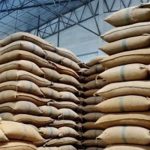LAHORE: Pakistan’s economy is experiencing structural inflation where the percentage change in the Consumer Price Index (CPI) is in double digits.
ByAssistant Professor of Economics at SDSB, Lahore University of Management Sciences (LUMS)
The percentage change in the Wholesale Price Index (WPI) has remained very high in the last couple of years. The Sensitive Price Indicator (SPI) is also in double digits, creating trouble for the masses.
In order to combat this structural inflation, the government has introduced conventional measures to stabilise the economy.
Earlier, the fuel prices were adjust in quick succession to obtain revenue. In addition, electricity prices have been Racks up as individuals are the largest consumers.
However, the government has faced the ire of the masses. The upward adjustment in fuel and electricity prices has fuelled inflation too.
Pakistan’s economy has also experienced balance of payments (BOP) constraints as import growth is faster than the increase in exports. Furthermore, there is a consistent decline in prices of the exportable surplus over the years, which could not bring valuable foreign exchange to the country.
Whenever the GDP growth exceeds 4%, the trade deficit increases rapidly. Then this trade deficit contributes to a high current account deficit.
Analysts and economists are of the opinion that the economy should grow around 7% to absorb the ever-increasing young labour force. However, this statement is without qualification.
Sustainable economic growth requires a stable BOP position where export growth should be in high-value-added products, which is not the case in Pakistan.
The growing economy experiences a higher deficit in BOP where raw material and capital goods imports increase at a fast pace. A low deficit is acceptable as it does not create BOP difficulties.
In the presence of a higher BOP deficit, either the State Bank of Pakistan (SBP) draws down on foreign exchange reserves or allows the rupee to depreciate.
In the outgoing FY 2021-22, the provisional GDP growth remained around 6%, which has been displayed as a success. However, the GDP growth brought external sector vulnerability to the fore.
The growth consumed the precious foreign exchange reserves. The dwindling reserves did not leave much space for the SBP to defend the rupee.
Knowing the reserves were falling, the speculators started to pour money into the currency market. In addition, residents of one of the neighbouring countries started to demand dollars.
Within a short span of time, the rupee-dollar parity reached 240 as the news of no deal with the International Monetary Fund (IMF) was circulating in the country.
Furthermore, another news of imminent default along with a Sri Lanka-like situation was in the air. However, the issuance of the letter from the IMF released some steam out of the currency market and the rupee-dollar parity became 214 in a short time.
Another factor contributing to structural inflation is the nature of tax system in Pakistan. Among the agriculture, industry and services sub-sectors, the industrial sub-sector is heavily tax. The agriculture sub-sector is the least tax-paying one while the services sub-sector falls between these two extremes.
For instance, the recent attempt to impose a fixed tax on wholesalers/ retailers was thwarted by the traders. Similarly, the Federal Board of Revenue is unable to integrate large retailers through the Point of Sales’ machines and could not achieve the desired target.
Similarly, there is inertia in tax codes and taxes could not be adjusted according to the inflation rate. Hence, real tax (nominal tax adjusted for inflation) falls in a high inflationary environment.
On the other hand, the nominal expenditure of the government increases with the acceleration in prices. Hence, the fiscal deficit also increases.
In short, Pakistan’s economy devaluation of Pakistani rupee is associated with structural inflation. Attempts to bring down the inflation through conventional measures would be politically costly for the government. Let’s see how things unfold in the coming months.


